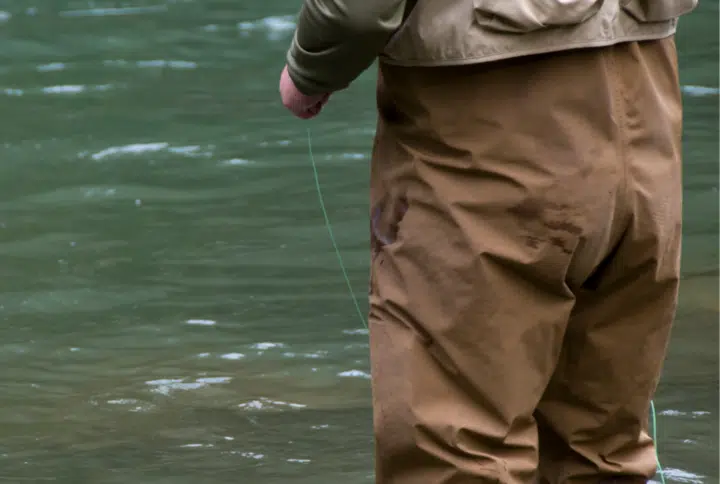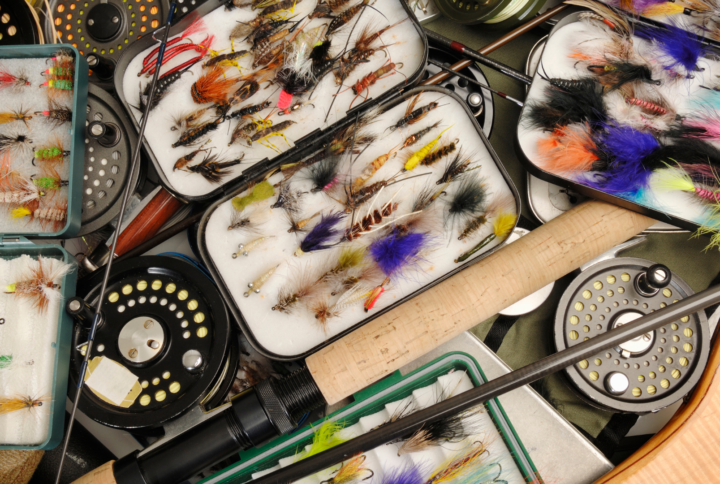Au Sable River - South Branch - Michigan
Fly Fishing River Report & Conditions
Au Sable River – South Branch - Water Flow Chart
Au Sable River – South Branch - Weather report & radar
Au Sable River – South Branch - General hatch chart
| Month | Hatch | Time of Day | Recommended Fly Sizes | Popular Fly Patterns |
|---|---|---|---|---|
| January | Nymphs and Midge | Morning and Evening | 20-22 | Buzzer Midge, Zebra Midge |
| Winter Stonefly | Afternoon | 16-18 | Little Black Stonefly, Ghost Stone | |
| February | Nymphs and Midge | Morning and Evening | 20-22 | Buzzer Midge, Griffith’s Gnat |
| Winter Stonefly | Afternoon | 16-18 | Little Black Stonefly, Ghost Stone | |
| March | Nymphs, Midge, Early Black Stonefly | Morning, Evening, Afternoon | 14-22 | BH Prince Nymph, Buzzer Midge, Black Stonefly Nymph |
| Blue Winged Olive | Afternoon | 18-20 | Blue Winged Olive Dun, Pheasant Tail Nymph | |
| April | Blue Winged Olive, Hendrickson, Early Black Stonefly | Afternoon | 14-20 | Hendrickson Dry Fly, Blue Quill, Black Stonefly Nymph |
| Caddis | Morning and Evening | 16-18 | Henryville Special, LaFontaine’s Olive Deep Sparkle Pupa | |
| May | Sulphurs, March Browns, Gray Drake | Afternoon and Evening | 12-16 | PMD Sparkle Dun, March Brown Dry Fly, Gray Drake Spinner |
| June | Hexagenia Limbata, Brown Drake, Isonychia Bicolor | Evening | 10-12 | Hex Dry Fly, Brown Drake Spinner, Iso Dun |
| July | Tricos, Terrestrials (Ants, Beetles, Hoppers) | Morning and Afternoon | 18-22 for Tricos, 10-16 for Terrestrials | Trico Spinner, Dave’s Hopper, Chernobyl Ant |
| August | Terrestrials (Ants, Beetles, Grasshoppers), Tricos | Morning and afternoon | 18-22 for Tricos, 10-16 for Terrestrials | Parachute Black Ant, Dave’s Hopper, CDC Trico Spinner |
| September | Terrestrials, Blue Winged Olive | Morning and afternoon | 18-20 for Blue Winged Olive, 10-16 for Terrestrials | Blue Winged Olive Dun, Hopper Juan, Chernobyl Ant |
| Isonychia | Evening | 12-14 | Iso Parachute, Iso Dun | |
| October | Blue Winged Olive, Terrestrials | Afternoon | 18-20 for Blue Winged Olive, 10-16 for Terrestrials | Parachute BWO, Ant Acid, Half and Half Hopper |
| November | Nymphs, Midge | Morning and Evening | 18-22 | Zebra Midge, Black Stonefly Nymph |
| December | Nymphs, Midge | Morning and Evening | 18-22 | Griffith’s Gnat, Zebra Midge, BH Prince Nymph |
Au Sable River – South Branch Access Points
- Returns Access
- Chase Bridge Access Site
- Smith Bridge
- High Banks
- Canoe Harbor
Au Sable River – South Branch Fishing Spots
- Connors Flats:This gravel bottom presents plenty of large rainbow, brown, and brook trout. Trout love the numerous bugs that populate the area.
- The Mason Tract:This 10-mile stretch is ideal for peaceful fly fishing. The wildlife sanctuary with mostly wadeable sections is home for good-sized trout and whitefish.
- Deward:The diverse bottom here caters to both wading and boat fishing experiences. Ample of trout and graylings are present.
- Roscommon: This spot is best visited in the spring and fall. The clear and wadeable waters are full of feisty trout measurable in pounds.
- South Branch at Chase Bridge: Public access, peaceful setting, prolific hatches, and trout-packed waters define this place.
Au Sable River – South Branch Local Fish Species
- Brown Trout – The Brown Trout is a prized catch amongst flyfishers due to its elusiveness and fighting spirit.
- Brook Trout – The Brook Trout is a native species to the Au Sable River and a delight to catch due to its vibrant colors.
- Rainbow Trout – Rainbow Trout are less common in the Au Sable River but are a thrilling catch due to their acrobatic leaps.
- Atlantic Salmon – Introduced to the Au Sable River, Atlantic Salmon have thrived and present a fantastic catch opportunity.
- Northern Pike – While not the main target for fly fishing, Northern Pike are found in the Au Sable River and can be a fun challenge to reel in.
- Smallmouth Bass – The river’s slower sections are perfect habitats for Smallmouth Bass, providing a great variety for flyfishers.
- Walleye – Walleye are less commonly targeted in fly fishing but they are a sporty fish found in the Au Sable River.
- Whitefish – Whitefish can be found in the Au Sable River and are often targeted during winter months.
About the Au Sable River – South Branch
The Au Sable River – South Branch is a darling rivulet with an intriguing past. It’s a major tributary of the otherworldly beautiful Au Sable River in the U.S. state of Michigan. 300 miles in length, it’s noted for being remarkably scenic and hosts a variety of fish species, making it a hotspot for fishing, canoeing and bird-watching.
Historically, the Au Sable River system was a significant pathway for the Ojibwa people who migrated seasonally between their summer fishing villages and winter hunting grounds. Used extensively in the logging era, it played a critical role in transporting the logged timber to mills and markets.
Today, the South Branch is adorned with charming towns along its banks such as
- Roscommon
- Higgins Lake
Community Contributions
Be part of the fishing community!
No updates submitted for this river.



